Assignment Brief:
A genetic algorithm is an heuristic search that is inspired by Charles Darwin’s theory of natural evolution. This algorithm reflects the process of natural selection where the fittest individuals are selected for reproduction in order to produce offspring of the next generation. Evolutionary Computation is a branch of computation that is quite unique. For one, it is not specific to any problem or task. It is a framework for solving generic problems. This offers interesting capacities for the design process where we are usually the ones iterating over a design decision in order to evaluate its effectiveness. If we could abstract the forces which guide a design decision, then we could potentially utilize Evolutionary algorithms to assist us in finding optimal solutions given a number of design criteria.
Assignment Objectives:
The main objective of this assignment is for students to utilize Evolutionary solvers in order to optimize a studio or seminar project. With the help of Galapagos (or similar) or Biomorpher , students will search for the most optimal solution (maximize, minimize, or reach a certain fitness) in the architectural environment. The result of the exercise should be a series of optimized elements which can help to drive the project forward.
The studio problem is to represent a topography along the riverbank in two different scales across the two ends. The aim is that the topography will be fabricated with a 500 x 1000 x 30Depth plywood board. In order to allow people to visually perceived different scales in the model, galapagos is used to optimize the amplitude and interval of the undulation of the topography.
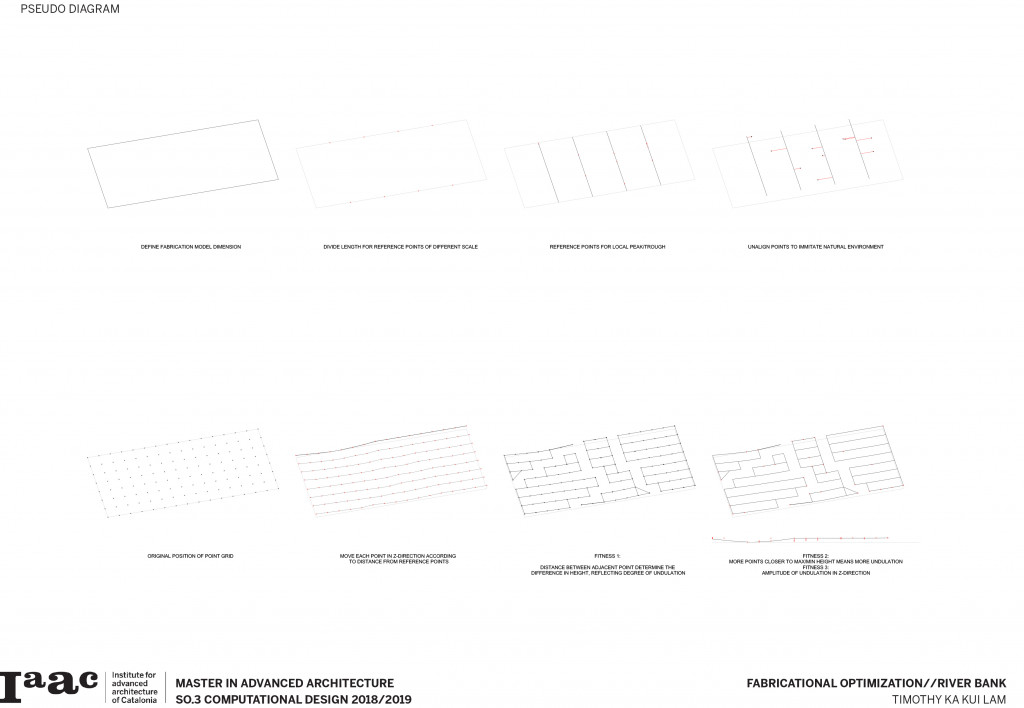

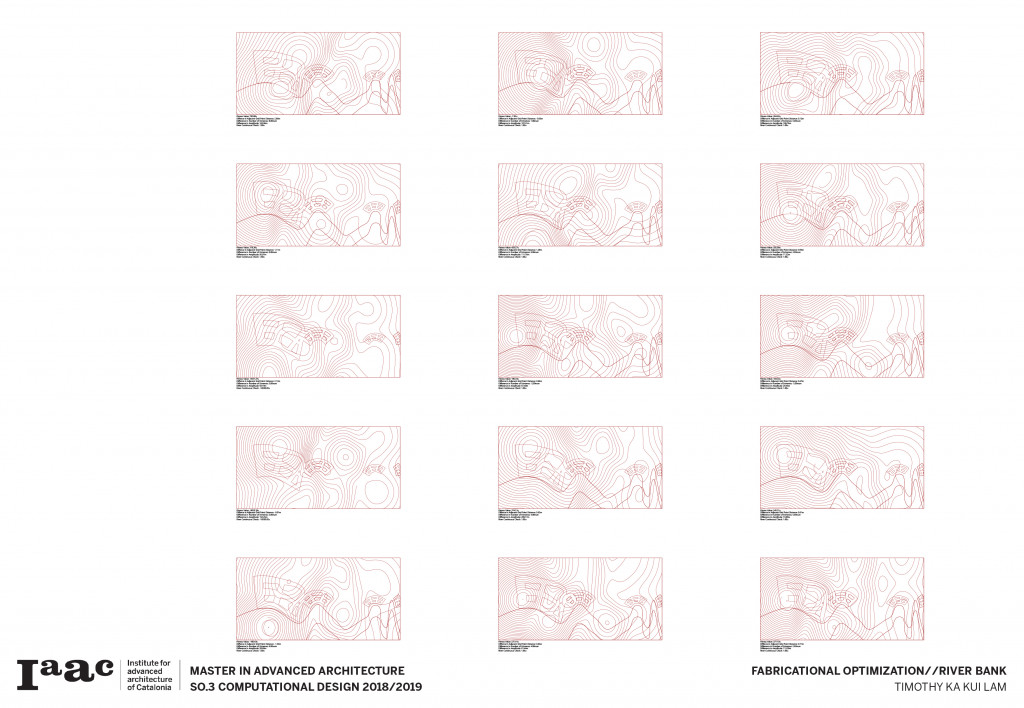
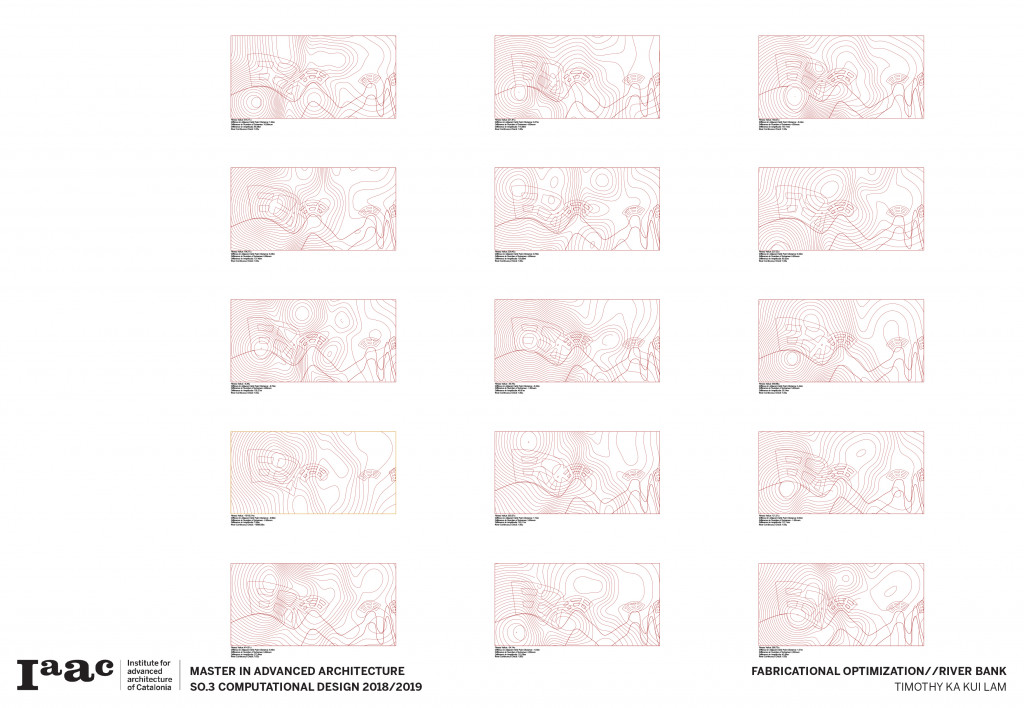
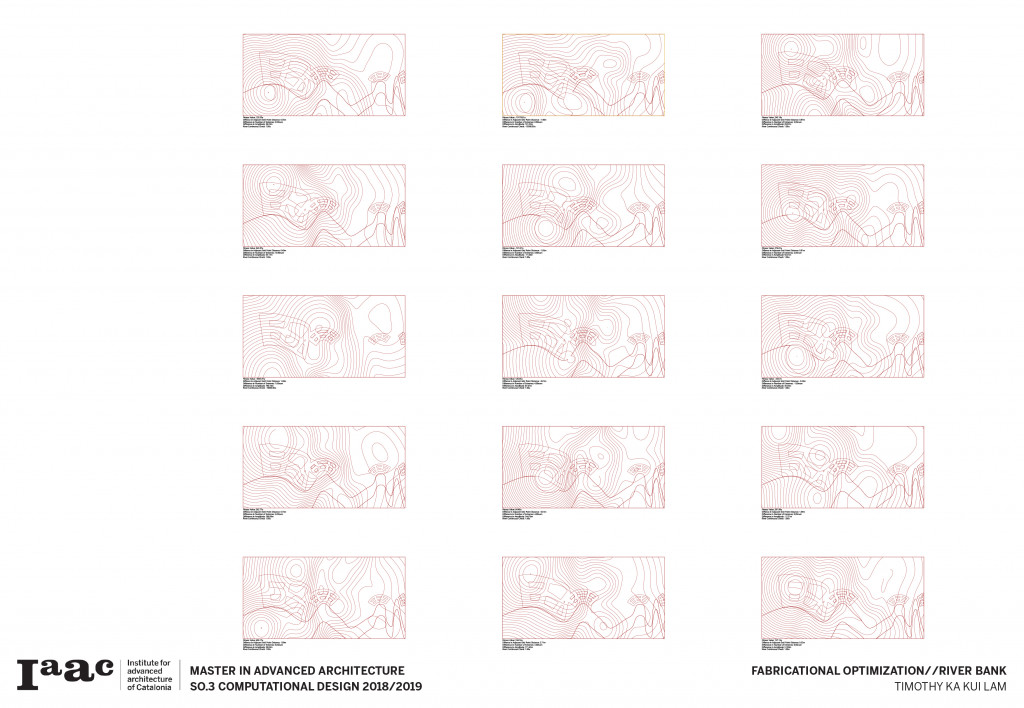
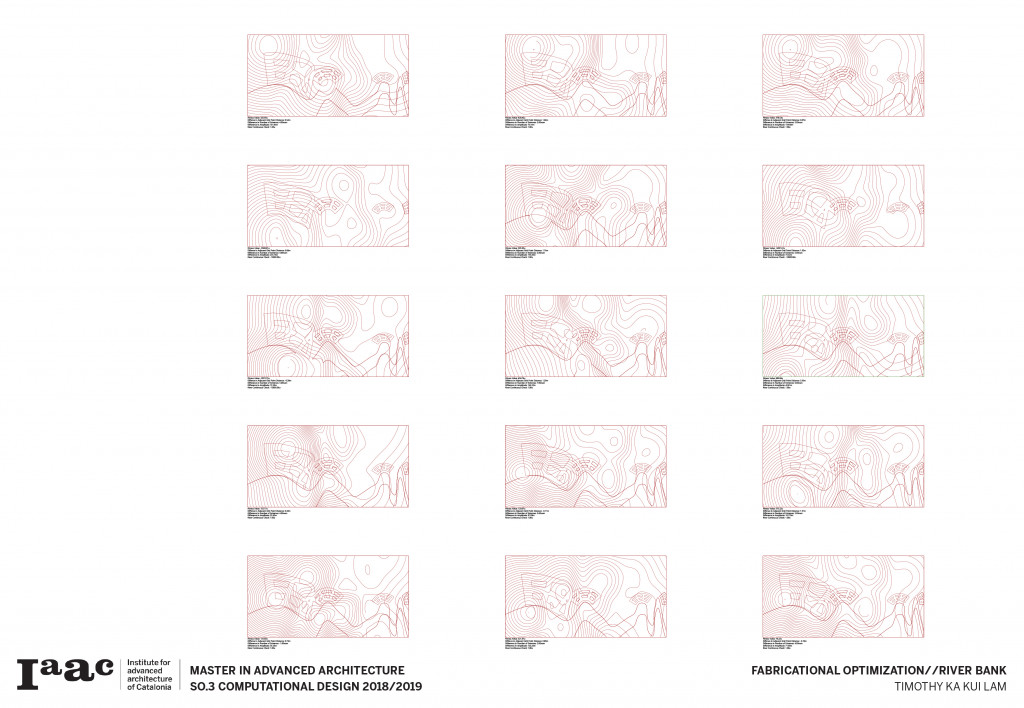
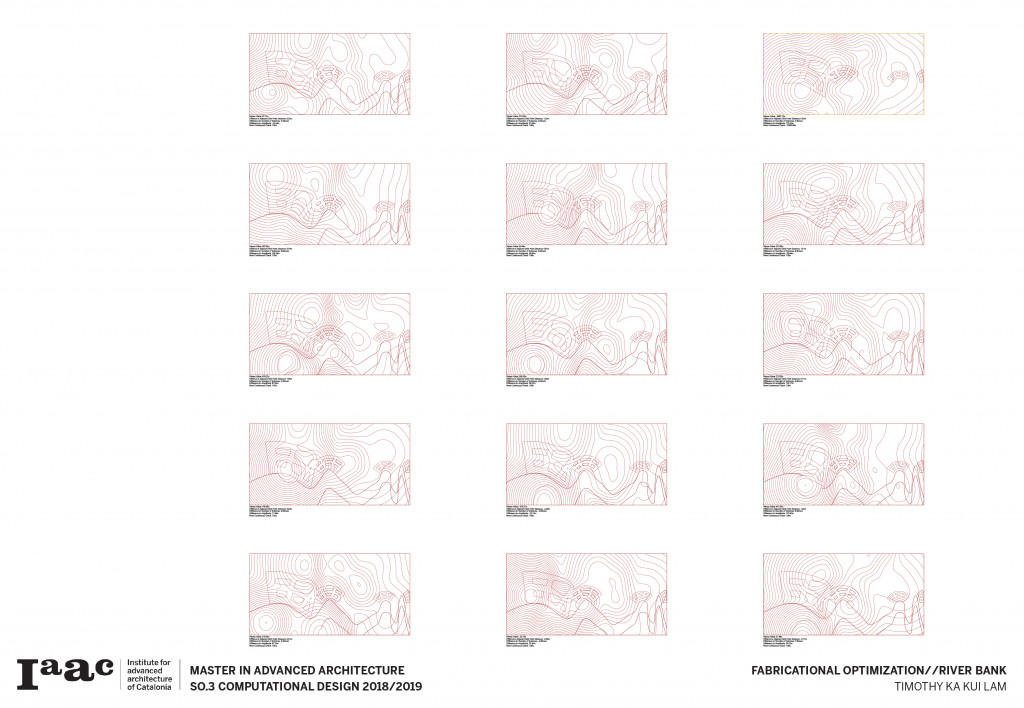
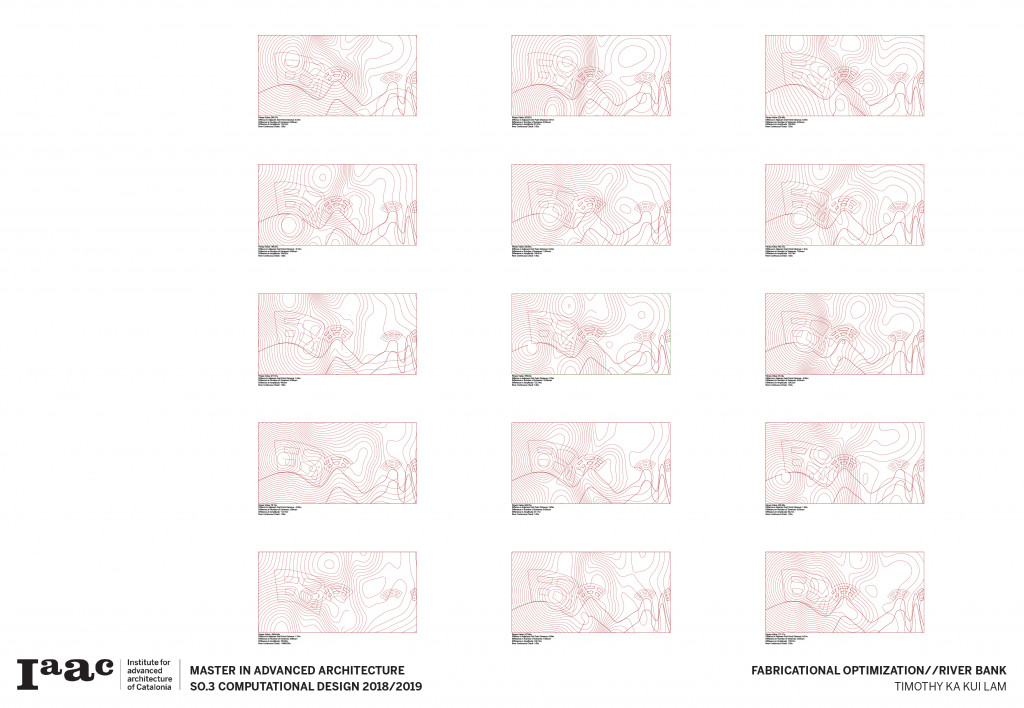
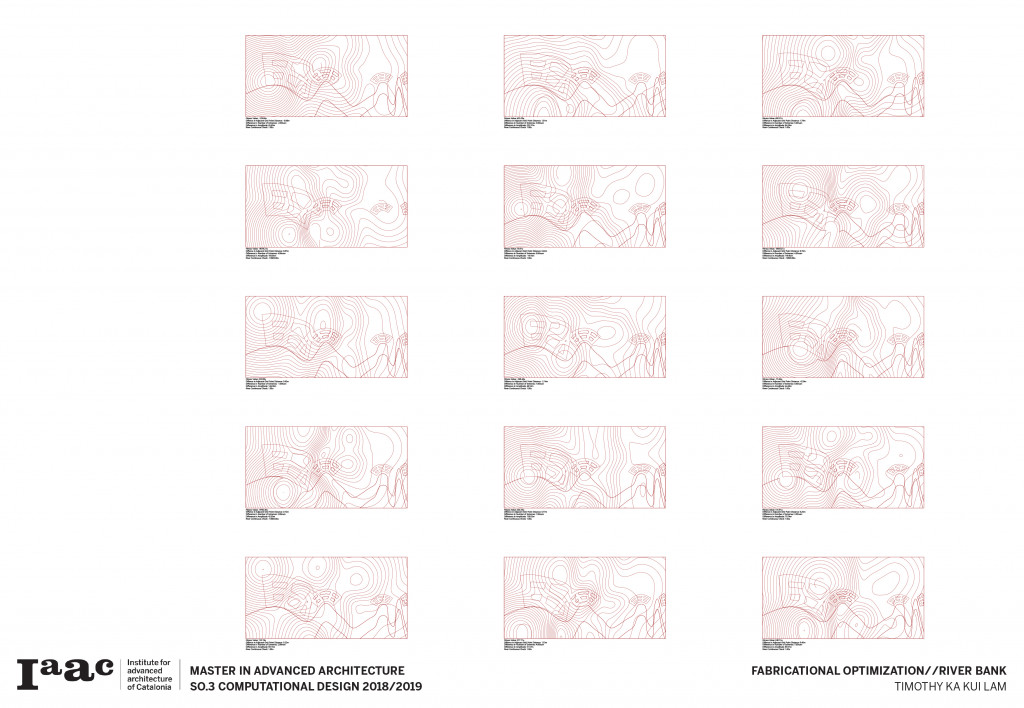
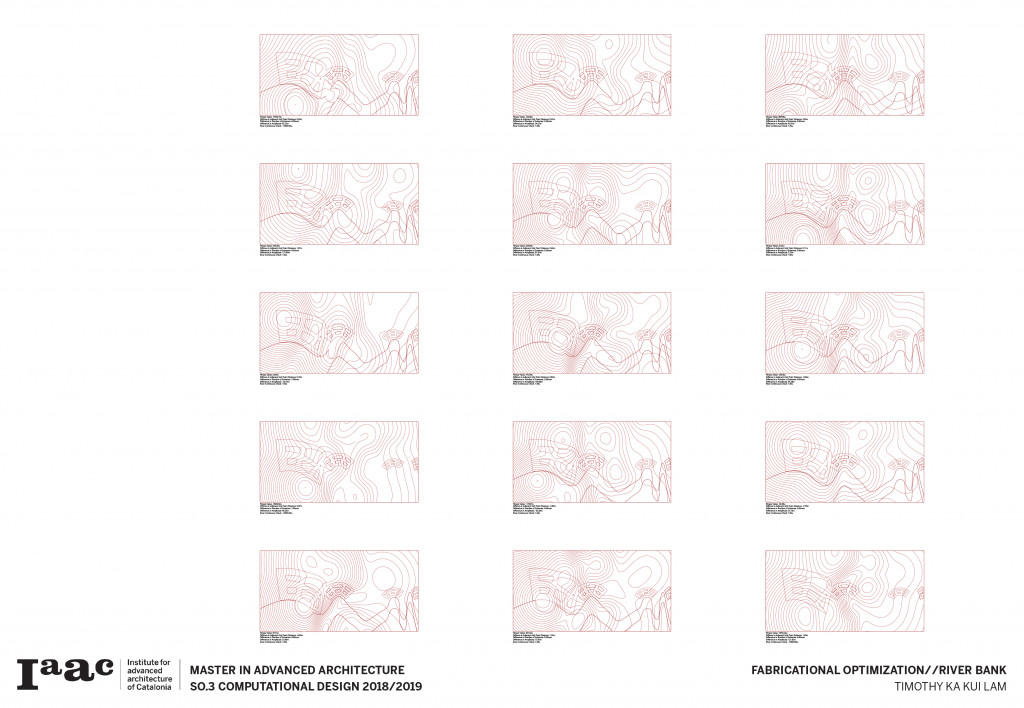

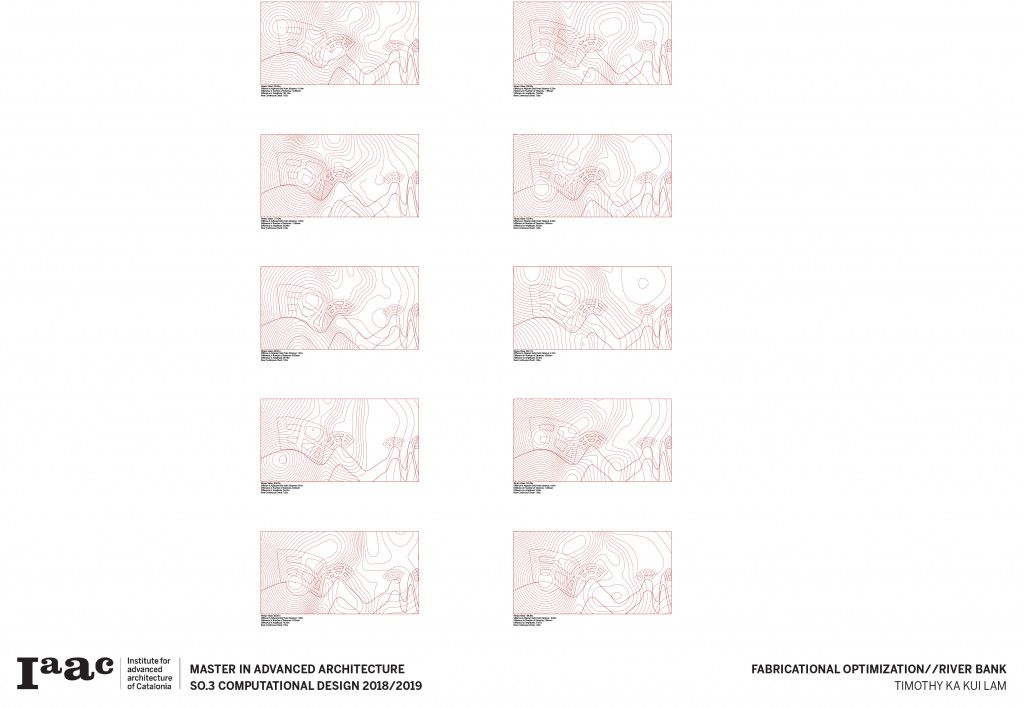
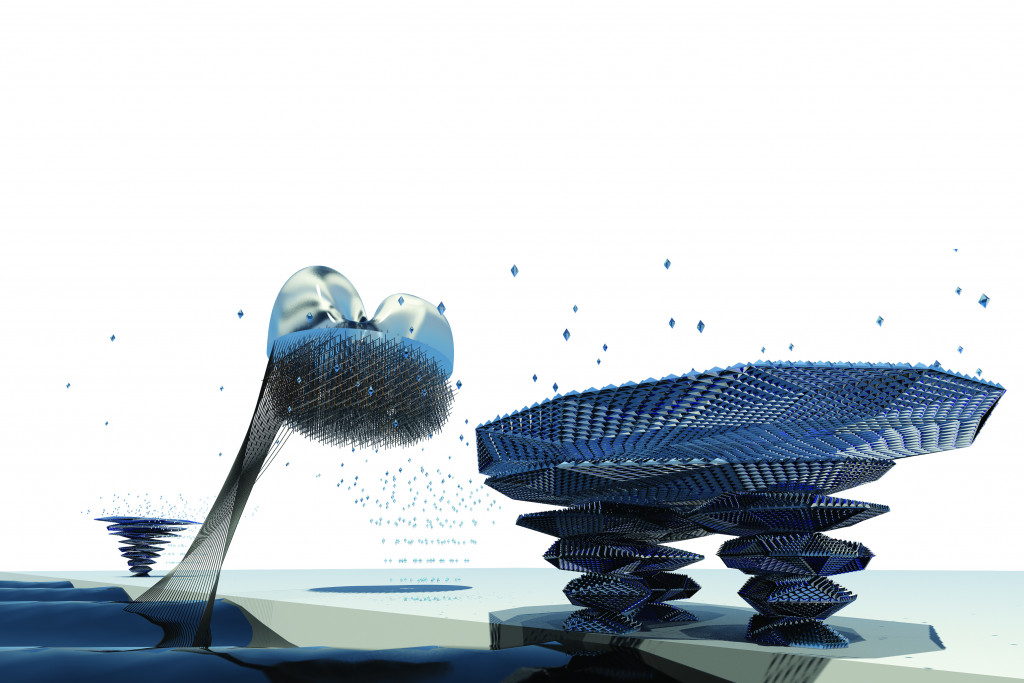
Genetic Optimization // Fabricated Riverbank is a project of IaaC,
Institute for Advanced Architecture of Catalonia
Developed at Master in Advanced Architecture in 2019 by:
Student: Timothy Ka Kui LAM
Tutor: RODRIGO AGUIRRE
Assistant: DANIIL KOSHELYUK,NIKOLETA MOUGKASI